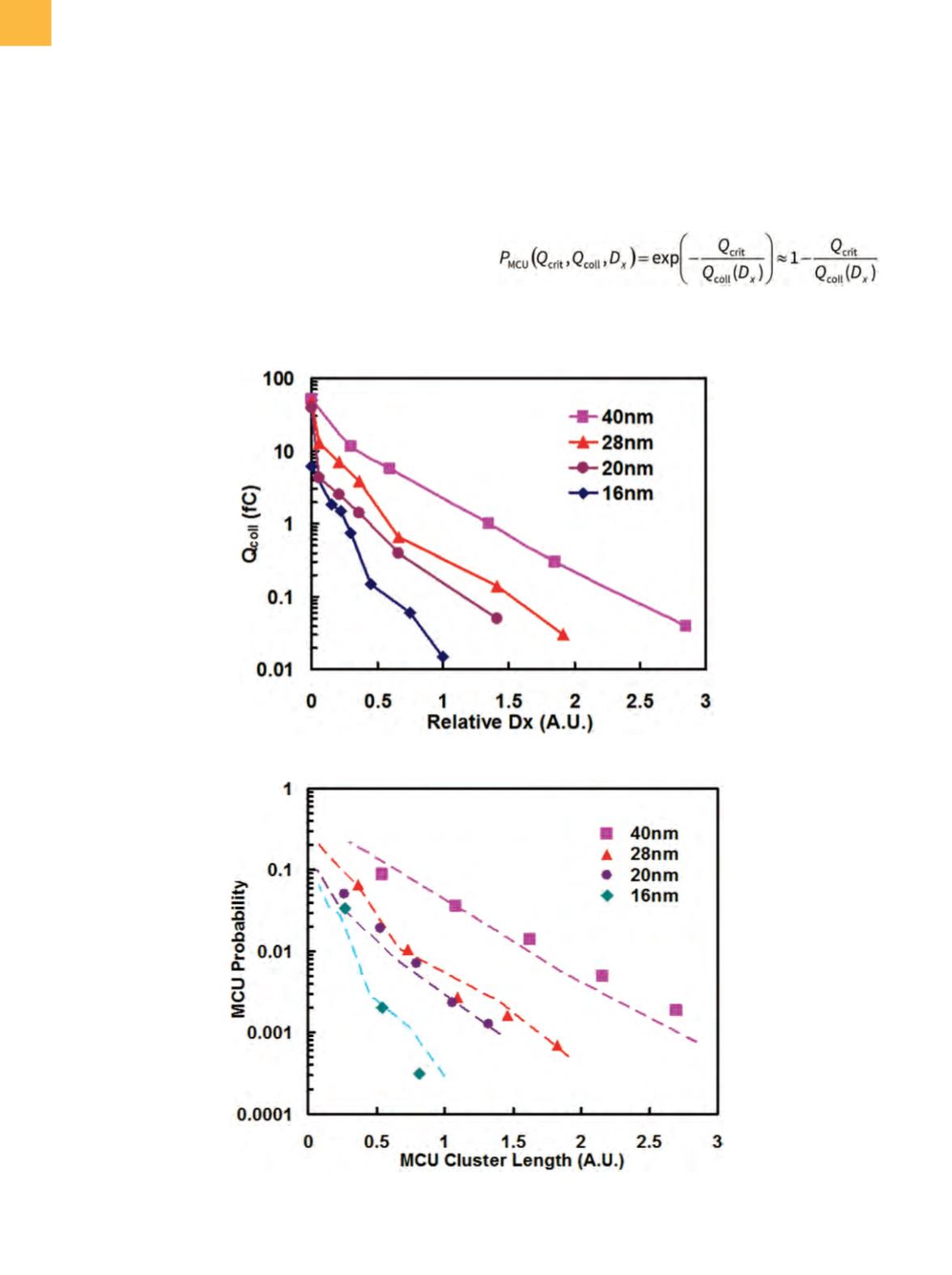
 edfas.org
edfas.org
ELECTRONIC DEVICE FAILURE ANALYSIS | VOLUME 18 NO. 2
24
planar SRAM are higher than those in the FinFET SRAM,
as expected because
Q
coll
is suppressed by the geometry
of the FinFET.
[14]
Figure 12 shows
Q
coll
as a function of the
relative distance of the strike locations along the
D
x
direc-
tion.
Q
coll
as a function of distance decreases in a similar
manner as the measured MCU probability distributions
as a function of the MCU cluster length, as expected for a
charge-sharing mechanism. Moreover, it is clear that
Q
coll
is a function of the technology node for any given cluster
length, implying that the differences observed in MCU
probabilities at any given distance are in fact related to
variations in
Q
coll
between technologies.
For a charge-sharing mechanism of upset, the abso-
lute rates of SBU and MCU are highly correlated, and so it
is assumed that the MCU probability is determined only
by the
Q
coll
associated with the particular cluster length.
The relative MCU probability that may be anticipated
from charge sharing at a distance
D
x
from the drain can
be approximated as:
and the number of MCU events is
N
MCU
=
N
SBU
·
P
MCU
. Relative
Fig. 12
Q
coll
as a function of
D
x
Fig. 13
Modeled MCU probabilities (dashed lines) of SRAMs normalized to
Q
coll
of 40 nm at
D
x
= 0 compared to experimental data
(symbols), which is the average of all test patterns, along the
BL
direction
(Eq 2)


















